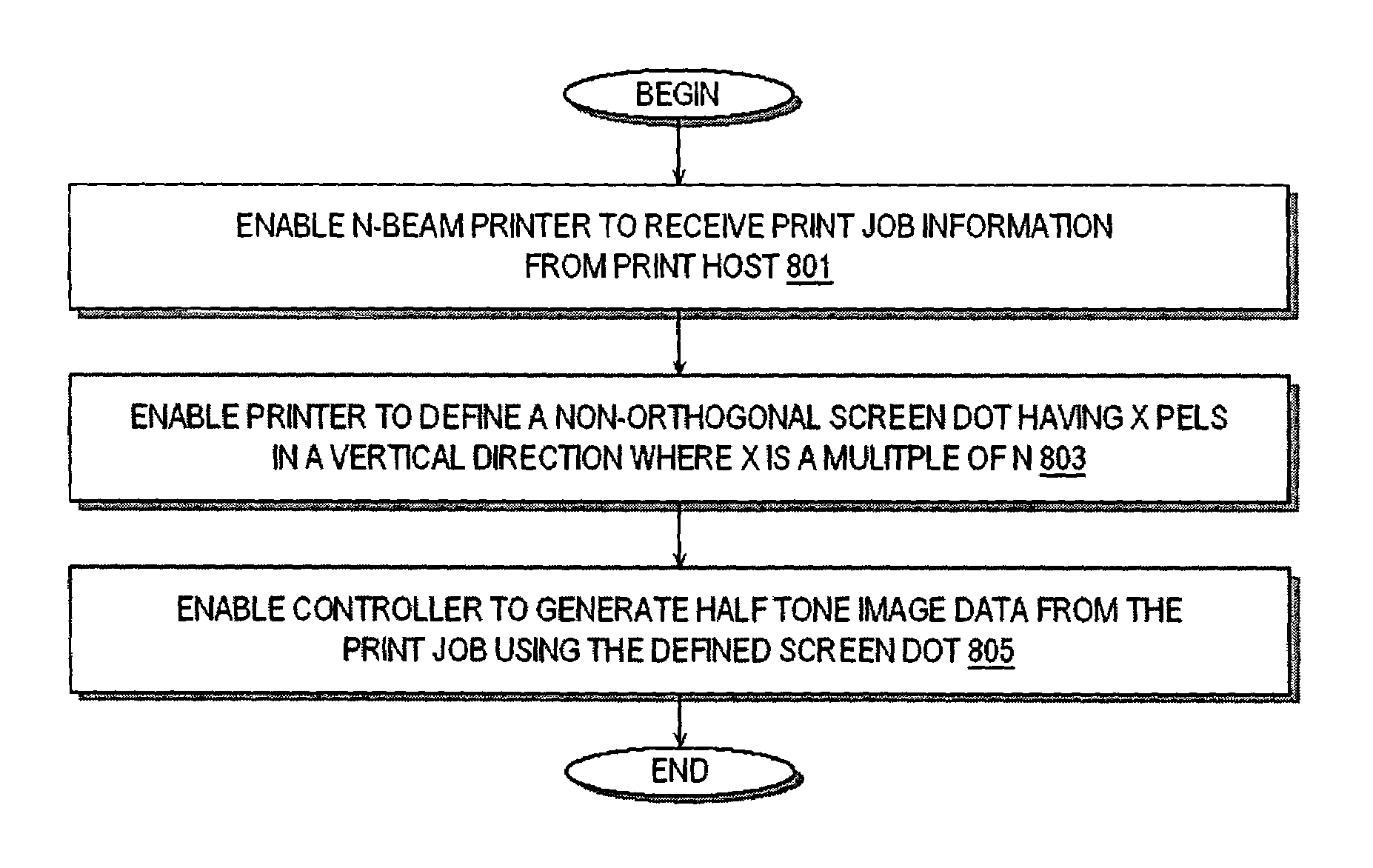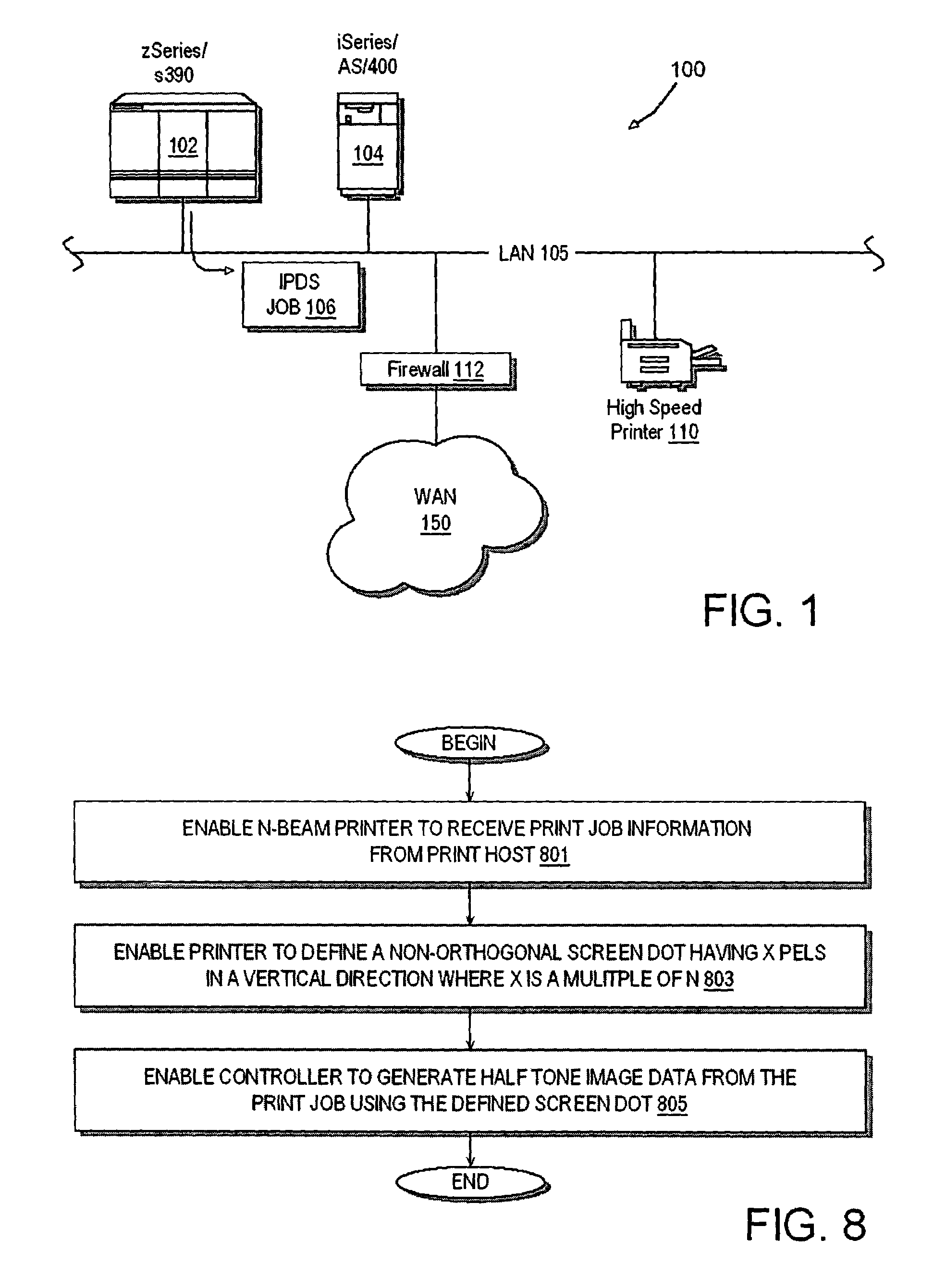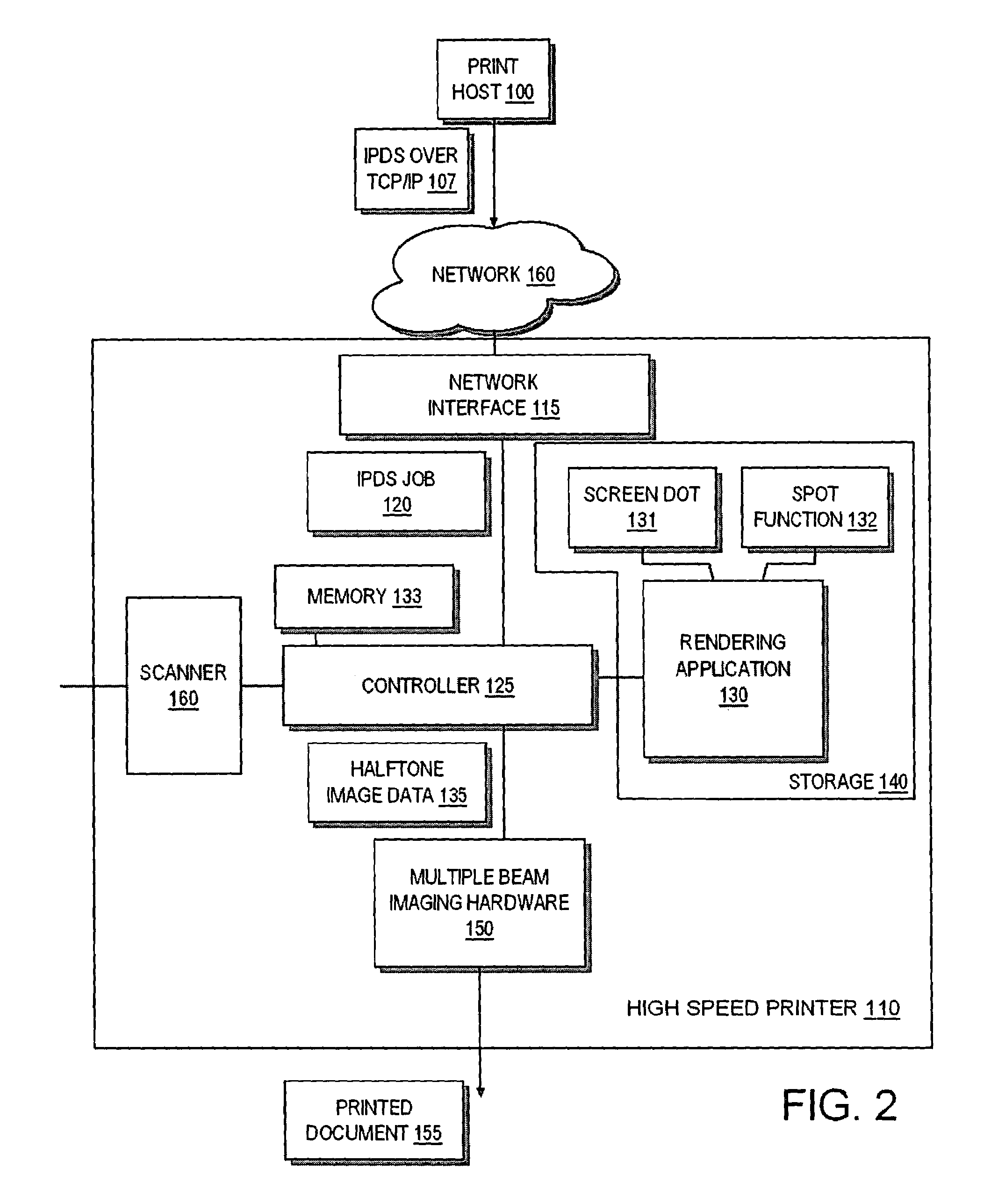Bandless halftone design for multiple beam printers employing non-orthogonal halftones
a technology of halftones and printers, applied in the field of printing systems, can solve the problems of easily detectable banding and affected banding in multiple beam printers
- Summary
- Abstract
- Description
- Claims
- Application Information
AI Technical Summary
Benefits of technology
Problems solved by technology
Method used
Image
Examples
Embodiment Construction
[0023]Generally speaking, the invention is directed towards a multiple beam printer system that produces substantially bandless halftone images. The printer system employs N laser beams and uses an X x Y halftone supercell design where X is the number of pels in the horizontal direction (HSIDE) and Y is the number of pels in the vertical direction (VSIDE). Preferably, Y is an integer multiple of N such that the distance between halftone screen dots is equal to an integer multiple of the total distance between all the beams of the multiple beam raster. Embodiments of the invention may employ a non-orthogonal screen dot supercell where the supercell defines two or more screen dots. The supercell may have an odd number of pels in either the horizontal or vertical direction. For supercells with an odd number of HSIDE or VSIDE pels, the invention preferably uses a spot function and an associated snap that function causes each screen dot in the supercell to grow consistently from all whit...
PUM
 Login to View More
Login to View More Abstract
Description
Claims
Application Information
 Login to View More
Login to View More - R&D
- Intellectual Property
- Life Sciences
- Materials
- Tech Scout
- Unparalleled Data Quality
- Higher Quality Content
- 60% Fewer Hallucinations
Browse by: Latest US Patents, China's latest patents, Technical Efficacy Thesaurus, Application Domain, Technology Topic, Popular Technical Reports.
© 2025 PatSnap. All rights reserved.Legal|Privacy policy|Modern Slavery Act Transparency Statement|Sitemap|About US| Contact US: help@patsnap.com



